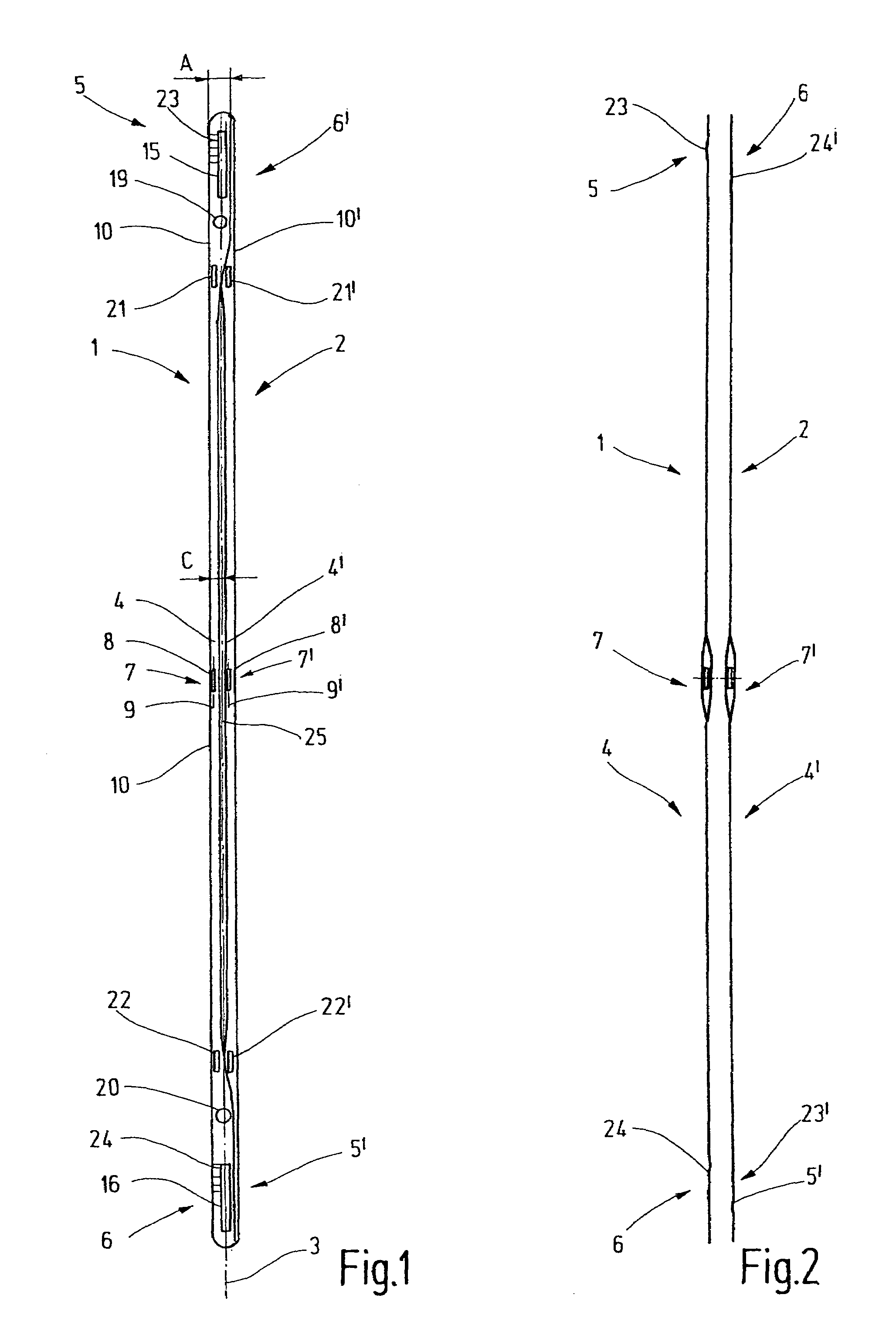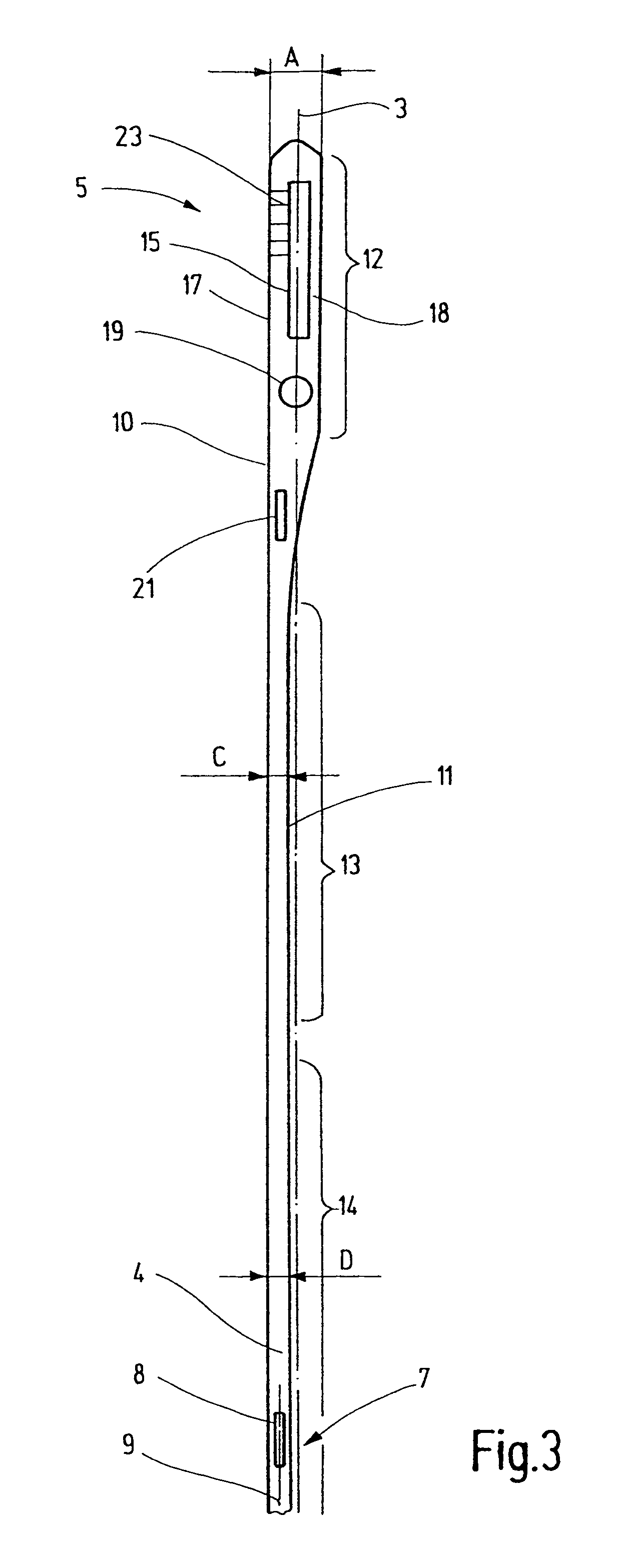Heald, particularly for rapidly running weaving machines
a rapid running, weaving machine technology, applied in the field of healds, can solve the problems of large waste during manufacture, reduced raw material quantity, and difficulty in reducing the quantity of raw materials, and achieve the effect of facilitating the yarn run
- Summary
- Abstract
- Description
- Claims
- Application Information
AI Technical Summary
Benefits of technology
Problems solved by technology
Method used
Image
Examples
Embodiment Construction
[0027]FIG. 1 shows two healds 1, 2 of identical structure, superposed on one another in a position turned 180°. The healds 1, 2 are to be assembled in a heald shaft and, with the latter, serve for guiding the warp yarns and for shed-forming. In addition to the heald 1, further healds are stacked above one another parallel to the plane of the drawing in the same arrangement and are to a certain extent flush with the heald 1. Likewise, further identical and thus flush healds are associated with the heald 2. Preferably, the healds of the arrangement pertaining to the heald 1 alternate with the healds of the arrangement pertaining to the heald 2. The description of the heald 1 which follows applies equally and correspondingly to the heald 2 which in FIG. 1 is arranged in a mirror image to the heald 1, relative to a line of symmetry 3. The details of the heald 2 are provided in FIG. 1 with the same reference numerals as the details of the heald 1. They are provided with an apostrophe mer...
PUM
 Login to View More
Login to View More Abstract
Description
Claims
Application Information
 Login to View More
Login to View More - R&D
- Intellectual Property
- Life Sciences
- Materials
- Tech Scout
- Unparalleled Data Quality
- Higher Quality Content
- 60% Fewer Hallucinations
Browse by: Latest US Patents, China's latest patents, Technical Efficacy Thesaurus, Application Domain, Technology Topic, Popular Technical Reports.
© 2025 PatSnap. All rights reserved.Legal|Privacy policy|Modern Slavery Act Transparency Statement|Sitemap|About US| Contact US: help@patsnap.com



